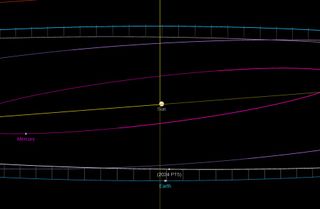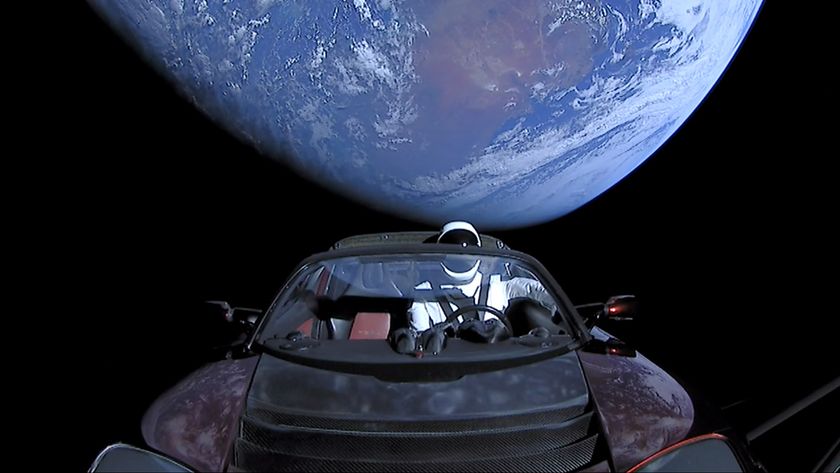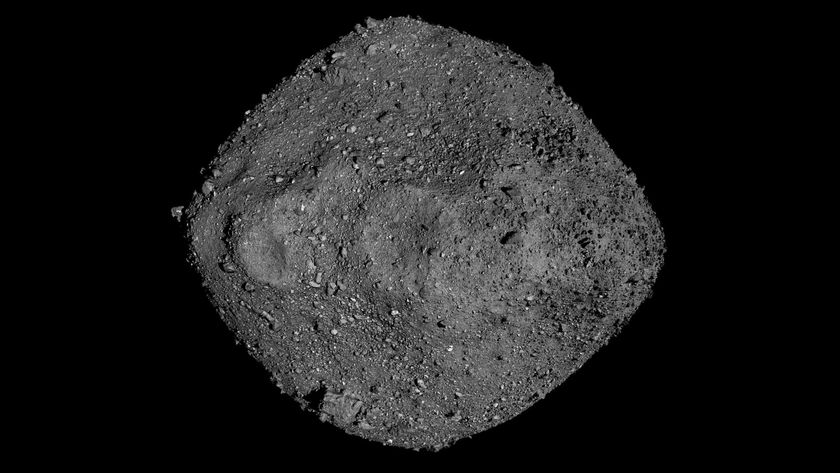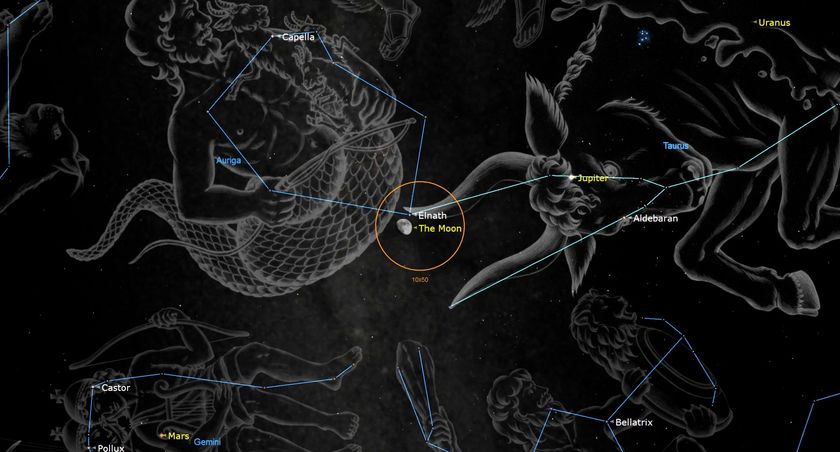Earth has caught a 'second moon,' scientists say
Earth should have captured a temporary "second moon" on Sunday (Sept. 29).
NASA scientists calculated that Earth should have captured a "second moon" on Sunday (Sept. 29). The "mini-moon" is actually the tiny asteroid 2024 PT5, which usually orbits the sun as part of a small asteroid belt that follows Earth.
While Earth's primary companion, the moon, has lingered around our planet for around 4 billion years since its formation in the solar system's infancy, this asteroid will be a temporary fixture that won't even see the year out.
"According to the latest data available from NASA's Jet Propulsion Laboratory Horizons system, the temporary capture will start at 15:54 EDT (1954 UTC) and will end at 11:43 EDT (1543 UTC) on November 25," mini-moon event expert and Universidad Complutense de Madrid professor Carlos de la Fuente Marcos told Space.com on Wednesday (Sept. 25).
"The object that is going to pay us a visit belongs to the Arjuna asteroid belt, a secondary asteroid belt made of space rocks that follow orbits very similar to that of Earth at an average distance to the sun of about 93 million miles (150 million kilometers)," Marcos told Space.com last week. "Objects in the Arjuna asteroid belt are part of the near-Earth object population of asteroids and comets."
Though the idea of Earth getting a second moon sounds extraordinary, these gravitational capture events are actually quite common.
Related: Earth will get another moon this month — but not for long!
"Some Arjuna asteroid belt objects can approach Earth at a close range of around 2.8 million miles (4.5 million kilometers) and at a relatively low velocity of less than 2,200 miles per hour (3,540 km/h)," Marcos explained. "Asteroid 2024 PT5 will not describe a full orbit around Earth. You may say that if a true satellite is like a customer buying goods inside a store, objects like 2024 PT5 are window shoppers."
Get the Space.com Newsletter
Breaking space news, the latest updates on rocket launches, skywatching events and more!
After its brief stay around Earth, the asteroid 2024 PT5 will continue to orbit the sun as part of the Arjuna family of asteroids.

2024 PT5 isn't the first asteroid to be captured by Earth and transformed into a mini-moon. Scientists have officially documented two prior "short captures," a type of asteroid-grabbing event lasting about a week and estimated to occur several times per decade. We also know of two prior rarer "long-capture" events.

The fact that asteroid 2024 PT5 will stick around for just a few weeks, as opposed to billions of years, isn't the only major difference between this "mini-moon" and the actual moon.
Whereas the moon dominates the night sky over Earth for at least half the month, 2024 PT5 won't be observable to the average skywatcher. However, professional astronomers may be able to grab us some images of this temporary alignment.
This is mostly due to the massive difference in size between the two bodies. While the moon is an estimated 2,159 miles (3,475 km) in diameter, 2024 PT5 is believed to be just 37 feet wide. That means the moon is a whopping 308,108 times wider than the lunar pretender asteroid 2024 PT5!
"The object is too small and dim for typical amateur telescopes and binoculars. However, the object is well within the brightness range of typical telescopes used by professional astronomers," Marcos concluded. "A telescope with a diameter of at least 30 inches plus a CCD or CMOS detector is needed to observe this object; a 30-inch telescope and a human eye behind it will not be enough."
The team's research is published in the journal The Research Notes of the AAS.
Join our Space Forums to keep talking space on the latest missions, night sky and more! And if you have a news tip, correction or comment, let us know at: community@space.com.

Robert Lea is a science journalist in the U.K. whose articles have been published in Physics World, New Scientist, Astronomy Magazine, All About Space, Newsweek and ZME Science. He also writes about science communication for Elsevier and the European Journal of Physics. Rob holds a bachelor of science degree in physics and astronomy from the U.K.’s Open University. Follow him on Twitter @sciencef1rst.
-
sooth121 THE SMALL MOON WILL ENTER THE EARTH'S MAGNETIC FIELD AND GO THROUGH IT, BUT IT WILL ONLY TAKE A 10cm METEOROD TO ENTER THE EARTH'S ATMOSPHERE.Reply
I am not an astrophysicist, but my work is in the field of mechanics and the study of calculus, which sparks the interest in this topic.
But because the topic has led me to thermodynamics, something popular when you start as an engineer. Then, of course, there are researches based on work on heat transfer and the most efficient project of using fossil fuels and renewable energy. The topic changes when the engineer discovers that energies from green sources are the answer. Well, you will start to see that there is money in heat transfer or that Mother Earth is saying something else. Nature versus money wins is the key to our future planet.
Let's take hydrodynamic physics as an example and then start a basic study around it with astrophysics. This morning you read about the little moon. Sorry for this basic knowledge I have about our planet's magnetic field, but isn't it much more about the moon orbiting ours without one? Will the little moon do or not the same thing, will it enter our orbit and then pass through it, or will it pass through the atmosphere, how strong is the tip of the projectile it travels through and/or is the gravitational force of the waning moon at its weakest phase when it passes through the new moon or a few days before September 28th? -
starman2 From the provided video, it appears as a close flyby with the Earth, drawing it a little closer as it passes. But it won't be circling the Earth.Reply -
FaseehSheikh Reply
The ISS is an ARTIFICIAL Satellite, so no it would not. However, it would qualify as a satellite, since it orbits an object(in this case-Earth!)LijeBaley said:So would the ISS qualify as a moon of the Earth? Just saying.


